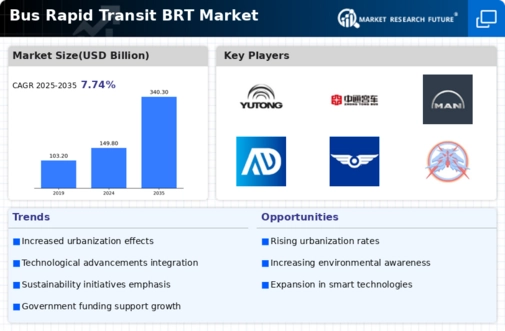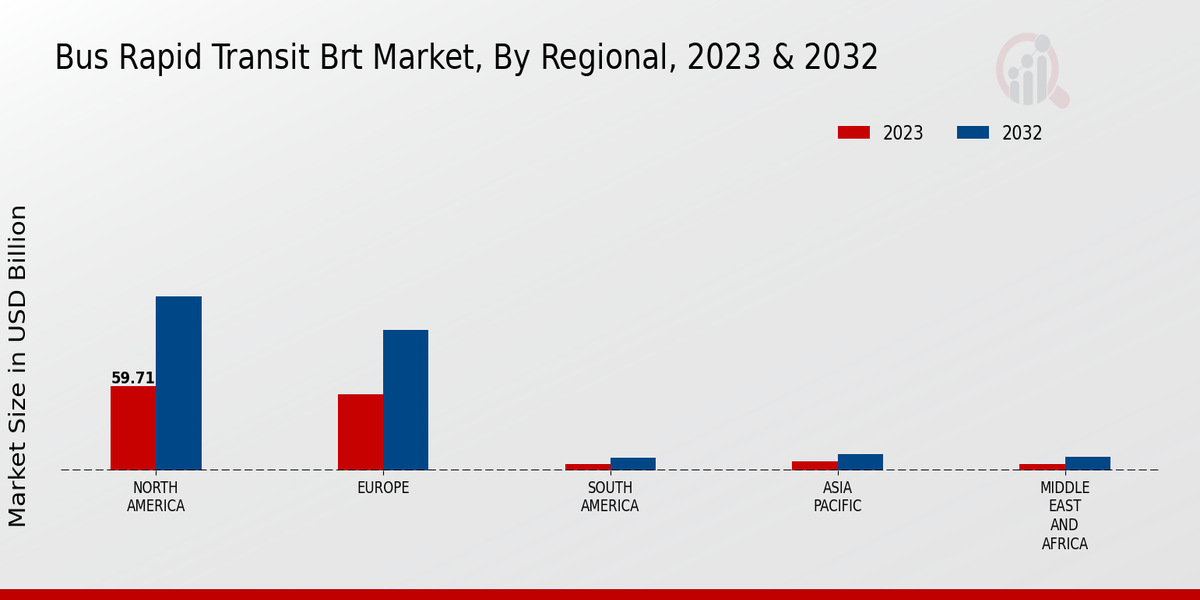Market Growth Projections
The Global Bus Rapid Transit BRT Market Industry is poised for substantial growth, with projections indicating a rise from 149.8 USD Billion in 2024 to 340.3 USD Billion by 2035. This growth trajectory suggests a compound annual growth rate of 7.74% from 2025 to 2035, reflecting the increasing adoption of BRT systems worldwide. Factors contributing to this growth include urbanization, government investments, and the need for sustainable transit solutions. As cities continue to prioritize efficient public transportation, the BRT market is likely to expand, offering new opportunities for stakeholders and enhancing urban mobility.
Technological Advancements
Technological advancements are driving innovation within the Global Bus Rapid Transit BRT Market Industry. The integration of smart technologies, such as real-time tracking systems and automated fare collection, enhances the overall efficiency and user experience of BRT services. These advancements enable better management of transit operations, leading to reduced wait times and improved service reliability. As cities increasingly adopt these technologies, the BRT market is expected to grow significantly. The shift towards smart transit solutions aligns with the broader trend of digital transformation in urban mobility, positioning BRT systems as a modern alternative to conventional public transport.
Public Awareness and Acceptance
Public awareness and acceptance of Bus Rapid Transit systems are pivotal for the success of the Global Bus Rapid Transit BRT Market Industry. As communities become more informed about the benefits of BRT, including reduced travel times and lower operational costs, support for such initiatives grows. Public engagement campaigns and stakeholder involvement are essential in fostering this acceptance. The projected growth of the BRT market, from 149.8 USD Billion in 2024 to 340.3 USD Billion by 2035, suggests that as more cities implement BRT systems, public perception will likely shift positively, further driving demand for efficient public transportation solutions.
Urbanization and Population Growth
The Global Bus Rapid Transit BRT Market Industry is significantly influenced by urbanization and population growth. As cities expand, the demand for efficient public transportation systems increases. In 2024, the market is valued at approximately 149.8 USD Billion, reflecting the need for sustainable transit solutions. Urban areas are projected to house 68 percent of the global population by 2050, necessitating the development of BRT systems that can alleviate congestion and reduce travel times. This trend indicates a robust growth trajectory for the BRT market, as cities seek to implement cost-effective and environmentally friendly transportation alternatives.
Government Initiatives and Investments
Government initiatives play a crucial role in the expansion of the Global Bus Rapid Transit BRT Market Industry. Many countries are prioritizing investments in public transportation infrastructure to enhance mobility and reduce carbon emissions. For instance, various governments have allocated substantial budgets to develop BRT systems, recognizing their potential to improve urban transit efficiency. The projected market growth from 149.8 USD Billion in 2024 to 340.3 USD Billion by 2035 underscores the impact of these initiatives. Such investments not only facilitate the construction of new BRT corridors but also support the integration of advanced technologies, further enhancing service delivery.
Environmental Concerns and Sustainability
Environmental concerns are increasingly shaping the Global Bus Rapid Transit BRT Market Industry. As climate change becomes a pressing issue, cities are exploring sustainable transportation options to reduce greenhouse gas emissions. BRT systems, which often utilize dedicated lanes and efficient vehicles, present a viable solution for minimizing urban pollution. The anticipated compound annual growth rate of 7.74% from 2025 to 2035 highlights the growing recognition of BRT as an eco-friendly alternative to traditional transit modes. By investing in BRT infrastructure, cities can not only improve air quality but also promote sustainable urban development, aligning with global sustainability goals.























